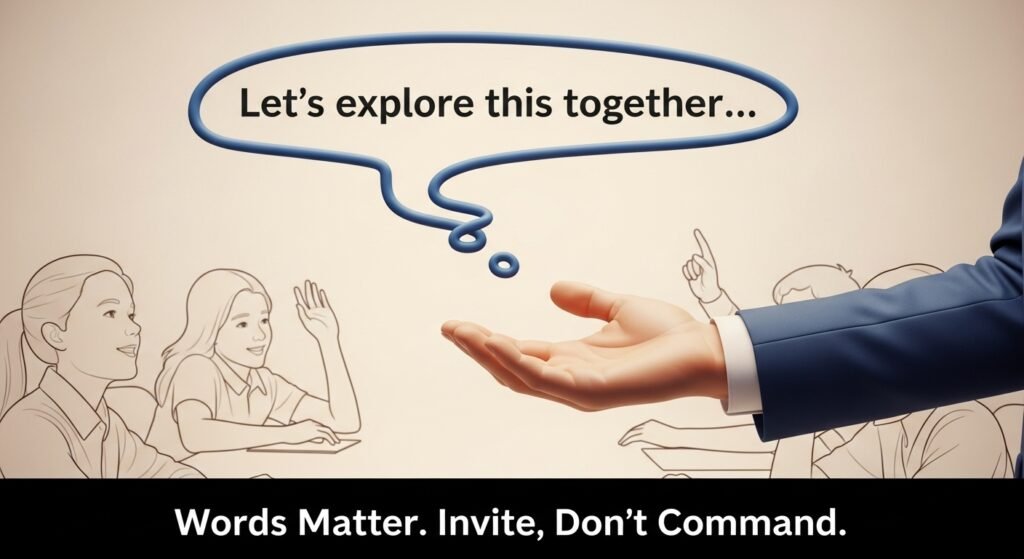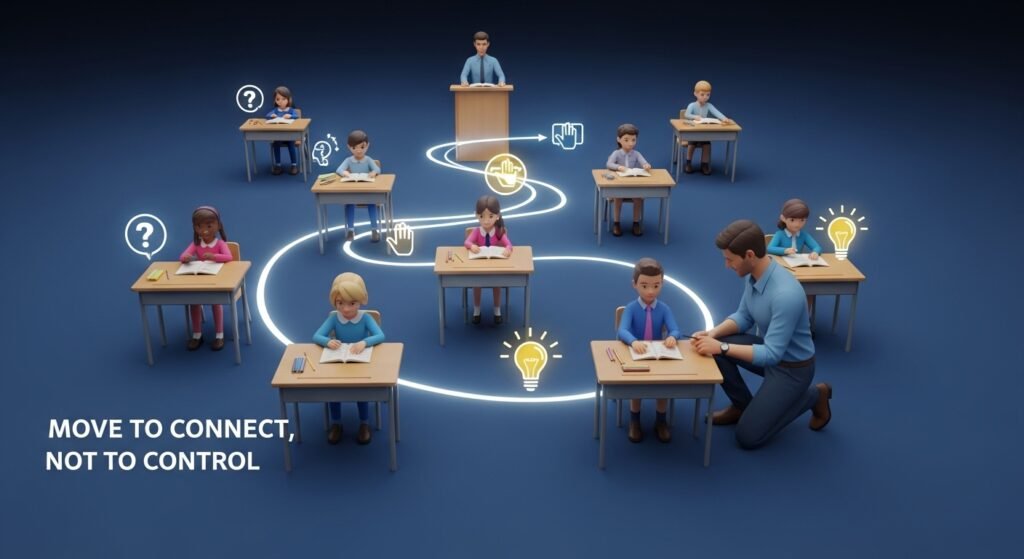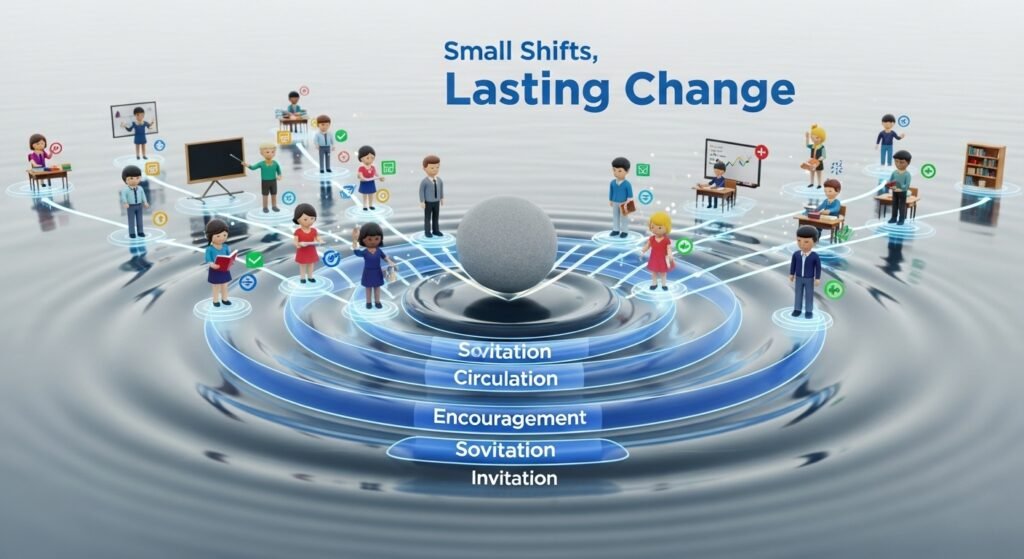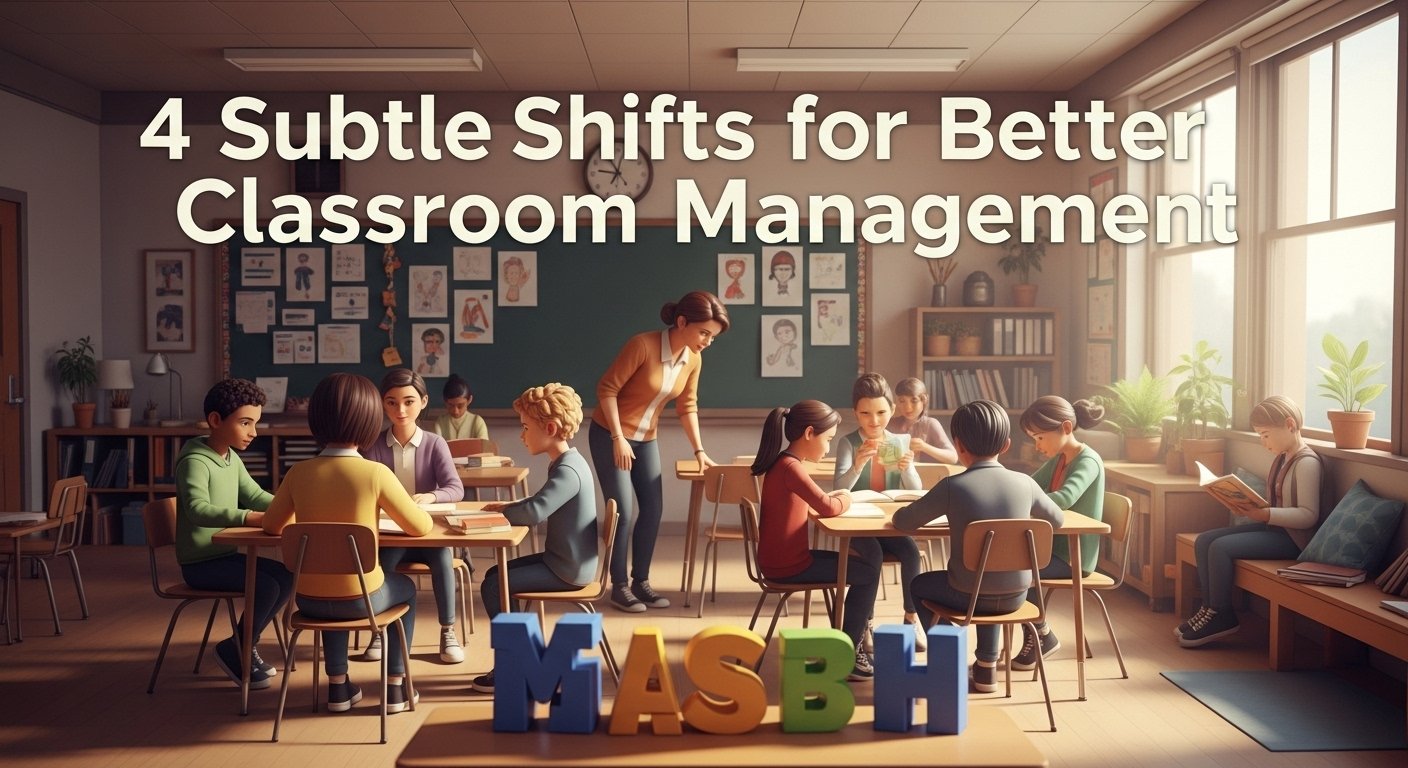Discover 4 subtle yet powerful classroom management shifts to create a calmer, more productive learning environment. Practical tips for teachers.
It’s third period, and you’ve just given clear, concise directions for the group activity. You wait expectantly for students to begin—but instead of productive buzz, you’re met with sidelong glances, whispered confusion, and the unmistakable sound of pencils tapping. One student sighs audibly. Another has already pulled out their phone. Your blood pressure ticks upward. You’ve entered the classroom management zone.
For many educators, classroom management shifts represent the difference between chaos and cohesion. But what if I told you that the most effective changes aren’t about louder commands, stricter rules, or more elaborate reward systems? What if the secret lies in subtle, intentional adjustments to your approach—classroom management shifts that prioritize connection over control?
Research from the American Psychological Association confirms that punitive classroom management approaches often exacerbate behavioral issues, while proactive, relationship-based strategies improve both climate and academic outcomes. Similarly, a study in the Journal of Educational Psychology notes that student motivation and cooperation increase significantly in environments where they feel respected and autonomous.
The goal isn’t to “manage” students like tasks on a checklist. It’s to cultivate a classroom ecosystem where engagement and mutual respect make heavy-handed interventions unnecessary. These four classroom management shifts will help you do exactly that.
Best Time Management Apps for Students (2025) — A Practical Guide

1. Shift from Commands to Invitations
The Problem:
Direct commands (“Sit down,” “Be quiet,” “Open your book”) often trigger resistance—especially in adolescents. They emphasize power dynamics rather than partnership.
The Shift:
Reframe directives as invitations. This subtle classroom management shift transforms tone and encourages voluntary compliance.
How to Implement:
- Instead of: “Everyone needs to be quiet now.”
- Try: “Let’s invite our focus back so we can hear Maya’s idea.”
- Instead of: “Stop tapping your pencil.”
- Try: “I’m going to invite us all to find a still hand so we can concentrate.”
Why It Works:
Language shapes reality. Invitations imply respect and shared ownership. This small classroom management shift can reduce power struggles and build cooperation.
Best Free Note-Taking Apps for Students in 2025: Boost Grades & Productivity

2. Shift from Praise to Encouragement
The Problem:
Generic praise (“Good job!” “You’re so smart!”) can create praise-dependent learners and undermine intrinsic motivation.
The Shift:
Move from evaluating to encouraging. This classroom management shift focuses on effort, process, and observable facts.
How to Implement:
- Instead of: “You’re such a great writer!”
- Try: “Your use of sensory details here really helped me picture the scene.”
- Instead of: “I’m so proud of you for finishing early.”
- Try: “You stayed focused even when this was challenging. How does it feel to have persevered?”
Why It Works:
Encouragement fosters self-assessment and internal motivation. This classroom management shift helps students develop a growth mindset.

3. Shift from Surveillance to Circulation
The Problem:
Stationing yourself at the front of the room to “monitor” students can feel adversarial and miss opportunities for connection.
The Shift:
Move purposefully among students throughout the lesson. This classroom management shift is about presence, not policing.
How to Implement:
- During independent work, sit beside—not in front of—students.
- Use proximity not as a threat but as a tool for support.
- Ask genuine questions: “How’s it going?” or “What part are you thinking through?”
Why It Works:
Circulation allows you to notice confusion, offer timely help, and build rapport. This preventative classroom management shift often eliminates the need for reactive discipline.
Time Management Hacks for Students
4. Shift from Consequences to Solutions
The Problem:
Traditional consequences often don’t teach new skills—they simply penalize. A student who doesn’t turn in homework may need organization help, not just detention.
The Shift:
Collaboratively problem-solve the underlying issue. This classroom management shift emphasizes restoration over punishment.
How to Implement:
- Instead of: “You didn’t turn it in, so you’ll have lunch detention.”
- Try: “I noticed your homework wasn’t submitted. What part of the process is tricky? Let’s figure it out together.”
- Use peace tables, conflict circles, or individual conferences to repair harm.
Why It Works:
Solutions address root causes and empower students. This classroom management shift builds responsibility and self-regulation.
Time Management Hacks for Students

Bringing It All Together
| Shift | From | To | Outcome |
|---|---|---|---|
| Language | Commands | Invitations | Reduces resistance, builds partnership |
| Feedback | Praise | Encouragement | Fosters intrinsic motivation |
| Movement | Surveillance | Circulation | Prevents issues, strengthens connections |
| Discipline | Consequences | Solutions | Teaches skills, repairs relationships |
Conclusion: Small Shifts, Big Change
Classroom management shifts don’t require a total overhaul. They’re about subtle refinements—in language, perspective, and movement—that collectively transform your classroom culture. By focusing on invitation, encouragement, circulation, and solutions, you create an environment where students feel capable, connected, and intrinsically motivated to learn.
The goal isn’t perfection. It’s practice. Try one shift this week. Notice what changes. These small, intentional classroom management shifts can lead to calmer, more joyful teaching—and learning—for everyone.
Call to Action (CTA)
Which of these classroom management shifts will you try first? Share your commitment or your own subtle strategy in the comments below! For more practical teaching insights, explore our Classroom Culture Toolkit or visit 50 Free Study Resources Every Student Should Save in 2025 for weekly tips.



